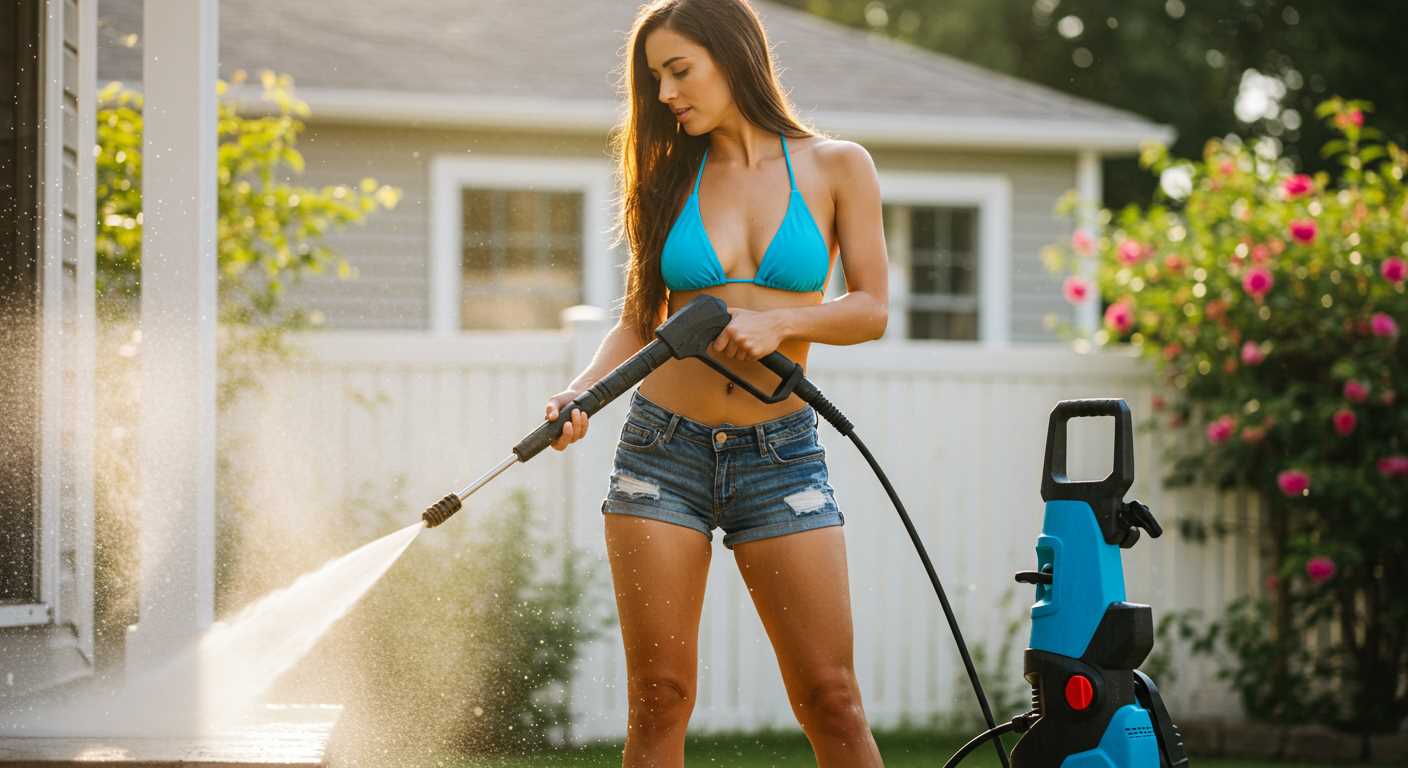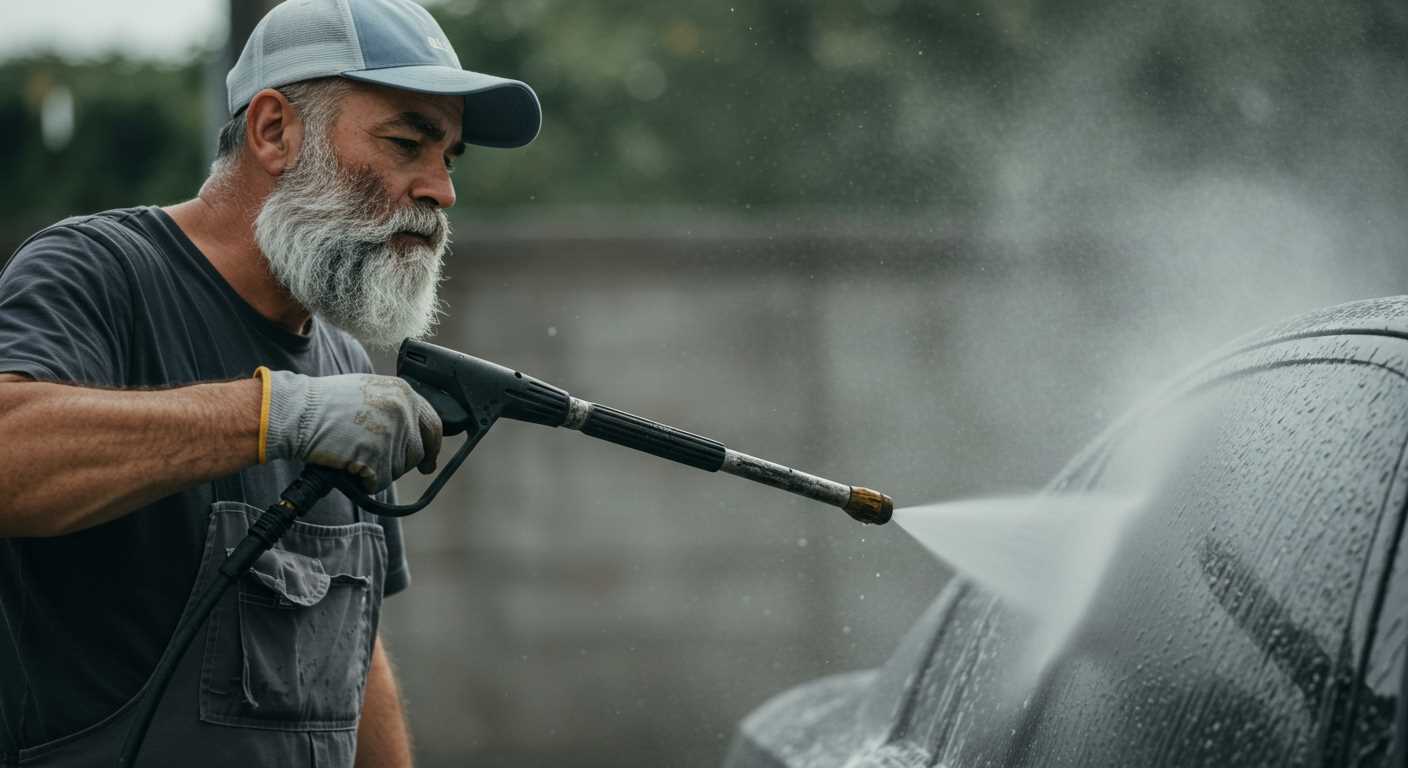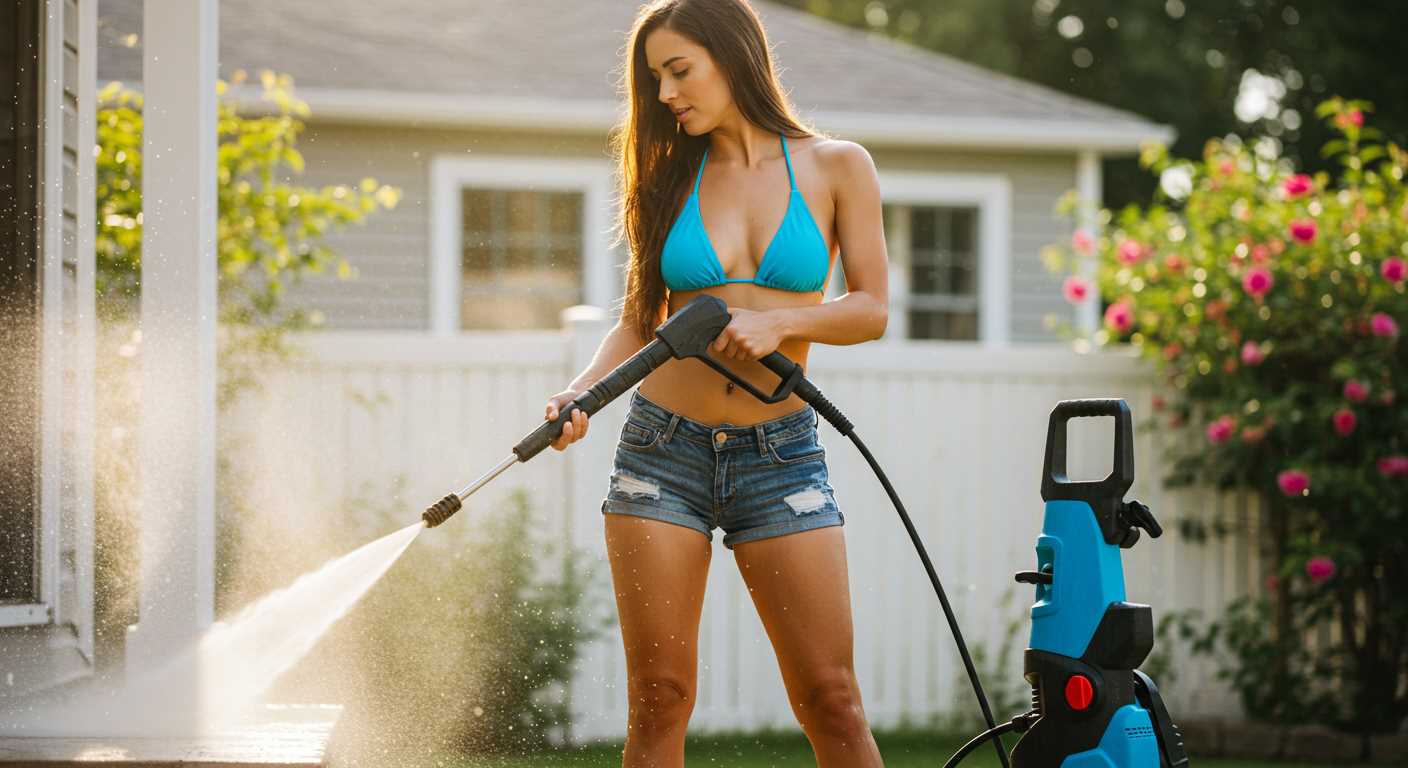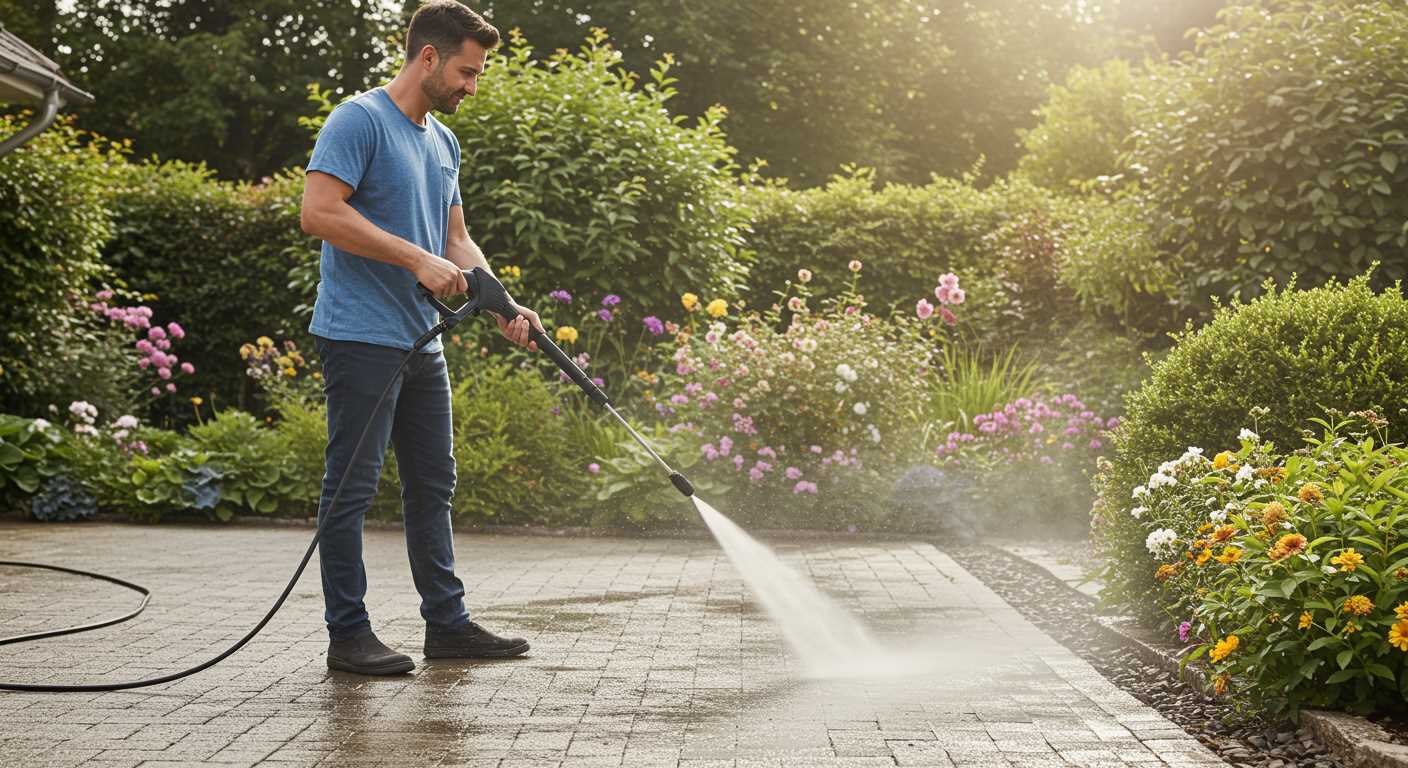




First, check the fuel level. If you’re dealing with a gas-powered unit, ensure there’s enough petrol in the tank. A common oversight, but it’s an easy fix. If the tank is full, inspect the fuel lines for blockages or leaks. Clear any debris that might be obstructing the flow.
Next, examine the spark plug. Remove it and inspect for wear or damage. A corroded or dirty spark plug can prevent ignition. Clean it with a wire brush or replace it entirely if it appears worn. This simple step often resolves ignition issues.
Another crucial point is the choke mechanism. If it’s engaged incorrectly, it can hinder the engine from firing up. Adjust the choke to the correct position, typically to the “open” setting for a warm engine. This adjustment can make a significant difference.
Don’t overlook the water supply. Ensure the hose is connected properly and that there are no kinks. A lack of sufficient water pressure can cause the device to stall. Turn on the water supply and check for any leaks or blockages in the hose.
If all else fails, inspect the ignition switch and safety features. Faulty switches can prevent the motor from engaging. Test these components with a multimeter to confirm they’re functioning correctly. Sometimes, it’s the smallest parts that cause the biggest problems.
Check the Power Supply and Connections
Ensure the device is plugged into a functioning outlet. A simple test with another appliance can confirm if the socket is operational. If an extension cord is used, check its integrity and rating; not all cords are suitable for high-demand equipment.
Inspect the Power Cord
Examine the power cord for any visible damage. Look for fraying, cuts, or exposed wires. If you spot any issues, the cord must be replaced to avoid hazards.
Check Circuit Breaker
If you’ve confirmed the socket and cord are fine, inspect the circuit breaker. A tripped breaker can be the culprit. Reset it if necessary, but if it trips again, there may be a more significant issue at hand.
- Test the outlet with a voltage meter to ensure proper voltage.
- Consider using a different outlet if problems persist.
- Look for any signs of moisture around outlets or connections, which can lead to electrical faults.
Ensuring a stable power supply is crucial. These checks can save time and prevent frustration. If everything appears in order yet the unit remains unresponsive, other areas may require attention.
Inspect the Fuel Level and Quality
First, ensure there’s enough fuel in the tank. A common oversight is assuming there’s sufficient petrol or diesel when, in reality, the tank is nearly empty. If the gauge shows low, fill it up with fresh fuel.
Next, evaluate the fuel quality. Old or contaminated fuel can cause starting issues. If the fuel has been sitting for more than 30 days, it’s advisable to drain the tank and refill it with new fuel. Stale fuel can lead to poor combustion, affecting engine performance.
Signs of Fuel Quality Problems
Look for these indicators that the fuel may not be suitable:
| Indicator | Potential Issue |
|---|---|
| Cloudy appearance | Contamination or water presence |
| Unpleasant odour | Degradation of fuel |
| Separation of layers | Mixing with water or other contaminants |
Fuel Additives
If you suspect the fuel has degraded but it’s not too old, consider using a fuel stabiliser. This can help clean the fuel system and improve combustion. However, if the fuel is significantly compromised, it’s best to replace it entirely. Always prioritise using high-quality fuel from reputable sources to avoid similar issues in the future.
Examine the ignition system components
First, inspect the spark plug. Remove it and check for wear, carbon build-up or damage. A clean, functioning spark plug is crucial for ignition. If it’s dirty, clean it with a wire brush, or replace it if it shows signs of wear. Ensure the gap is set correctly, usually around 0.025 inches; refer to your manual for specifics.
Next, examine the ignition coil. This component is responsible for generating the high voltage needed to create a spark. Look for cracks or signs of corrosion. If you have a multimeter, test the coil’s resistance; consult the manufacturer’s specifications for the correct values. A faulty coil will prevent ignition.
Check the wiring and connections leading to the ignition system. Look for frayed wires, loose connections or corrosion. A poor connection can hinder the flow of electricity, affecting the ignition process. Tighten any loose connections, and replace any damaged wires to ensure proper functionality.
Lastly, assess the safety switch or kill switch. Sometimes, these switches can malfunction or get stuck, preventing the ignition sequence. Confirm that they are in the correct position and functioning properly. If you notice any issues, replacing the switch may be necessary to restore operation.
Clean or Replace the Air Filter

Inspect the air filter for dirt and debris. A clogged filter restricts airflow, making it difficult for the engine to function properly. If you notice significant grime, remove the filter and clean it with compressed air or wash it with soapy water, ensuring it’s completely dry before reinstalling. If the filter is frayed or damaged, replacing it is a better option. A new filter guarantees optimal air intake and can boost performance.
Steps for Cleaning
Remove the filter cover using a screwdriver. Take out the filter gently to avoid damaging it or connected components. If cleaning, use a soft brush to remove loose dirt before washing. After cleaning, allow it to dry thoroughly to prevent moisture from entering the engine. Reinstall it securely, ensuring all clips and covers are properly attached.
When to Replace
Replacement is necessary if you see tears, heavy discolouration, or it feels brittle. Always refer to the manufacturer’s specifications for the correct filter type. Regularly checking and maintaining the filter can save you from future headaches and improve the longevity of your equipment.
Inspect the Spark Plug for Damage
First, remove the spark plug using a socket wrench. Examine it closely for signs of wear, such as cracks, carbon buildup, or corrosion. A damaged spark plug can cause ignition failure, preventing the engine from firing. Replace it if you notice any serious issues, as a new plug can often solve stubborn starting problems.
Signs of a Faulty Spark Plug
Look for excessive carbon deposits, which indicate a fuel-rich mixture or improper combustion. If the electrode appears eroded or burnt, that’s a clear sign it needs replacing. Even a small crack in the ceramic insulator can lead to misfiring or no firing at all.
Testing the Spark Plug
After inspecting, you can test it by reconnecting it to the ignition cable and grounding it against the engine while someone pulls the starter cord. A bright blue spark means the plug works. If there’s no spark, it’s time for a replacement. Don’t forget to ensure the gap between the electrodes is within specifications, as an incorrect gap can affect performance.
While you’re at it, consider tackling other maintenance tasks, such as cleaning or replacing the air filter. For a different cleaning challenge, check out this guide on how to clean microfiber couch with steam cleaner.
Review the water supply and hose connections
Check the water source. Ensure the tap is fully open and that there’s an adequate flow. A low water supply can lead to operational issues.
Inspect the hose connections
- Examine the inlet hose for kinks or blockages. A twisted or crushed hose restricts flow, affecting performance.
- Ensure all connections are tight. Loose fittings can lead to leaks, reducing water pressure.
- Look for visible cracks or wear on the hoses. Damaged hoses should be replaced to maintain optimal performance.
Check for filters
- Look for any inlet filters. If present, clean or replace them to prevent debris from obstructing water flow.
- Ensure the water supply is free from contaminants. Sediments can clog filters, leading to insufficient water delivery.
In my experience, a common oversight is the water supply. I once had a client who struggled with an unresponsive unit, only to discover the garden hose had a significant kink. It’s always worth taking a moment to assess the entire setup before diving deeper into troubleshooting.
Test the Safety Features
Begin by checking the safety lockout switch. This feature is designed to prevent accidental activation. Ensure that it is in the correct position; sometimes, it can be inadvertently engaged. I recall a colleague who faced a similar issue–it turned out the switch was set incorrectly, causing unnecessary frustration.
Next, examine the thermal relief valve. This component is crucial for preventing overheating. If it’s stuck, it could lead to engine failure. I’ve seen instances where a simple cleaning of the valve restored functionality. Make sure it’s not blocked and operates smoothly.
Don’t overlook the high-pressure hose. Inspect it for any kinks or damage. A compromised hose can trigger the system’s safety mechanisms, shutting everything down. I had a unit once where the hose looked fine externally but had internal damage, which caused safety features to activate unexpectedly.
Lastly, verify that the water supply is sufficient. Some models have built-in safeguards that prevent operation when water flow is inadequate. I’ve experienced this firsthand when I forgot to check the water source before trying to engage the machine–only to find it wouldn’t run at all until I rectified the issue.
Consult the manufacturer’s manual for troubleshooting
Referencing the manufacturer’s manual is a critical step in addressing any operational issues. Each model has specific guidelines tailored to its components and systems. I recall a time when I faced a stubborn model that refused to operate. The manual pointed out a unique reset procedure that wasn’t obvious at first glance. By following those instructions, I managed to resolve the problem in minutes.
Check the troubleshooting section for common issues and solutions. Many manuals include flowcharts that guide you through diagnosing faults systematically. For instance, I found a guide that helped pinpoint a fuel-related issue by checking the recommended fuel type and its condition. This saved me from unnecessary repairs.
Don’t overlook any safety precautions outlined in the manual. I once skipped a few steps regarding pressure release and ended up with a minor mishap. Safety features are often highlighted in the manual and understanding them can prevent accidents.
For those looking to use their equipment effectively, the manual also provides maintenance tips that can enhance performance. I’ve learned a lot from these sections, including optimal cleaning methods for different surfaces, such as cleaning the balcony with a pressure washer without collateral damage. It’s amazing how much insight a simple manual can provide.





.jpg)


